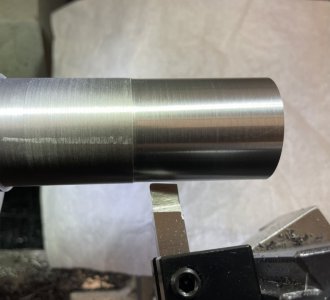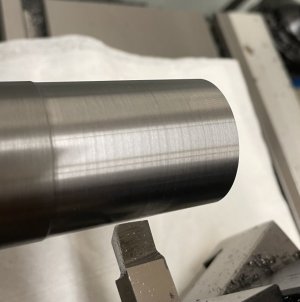This where I am on finishing. Tool ground to about 10-12 degrees for all rakes and reliefs. All edges and the nose honed. Nose radius is about 0.050".
Photo on the left shows turning first at 0.0025 IPR, about 500 RPM, with tool perpendicular to the work. Fingernail test included

.
Then I rotated the tool as shown, turned at a higher feed rate - 0.050 IPR, and a very good finish. The photo doesn't do it justice. Zero fingernail scraping. It looks like the work is seeing a large radius on the trailing edge of the nose -- accidental, but something to remember for future grinds and/or tool post rotation.
I still don't understand why the perpendicular case, with nose radius 20 times feed rate, doesn't have a better finish. Am I expecting too much?
Photo on the right shows a subtle repeating pattern. I think this is due to one of my change gears out-of-round or bored slightly off-center. I can watch it oscillate. Needs replacement.
View attachment 403659View attachment 403656



